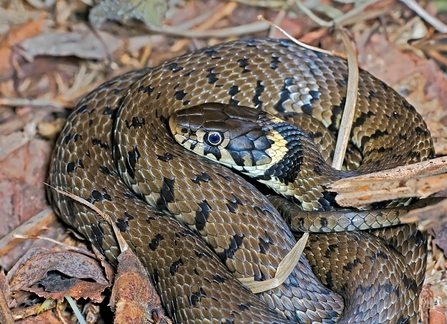When you picture a British snake, the image that pops into your mind might be a greenish grass snake and for good reason. As the UK’s most widespread and commonly spotted snake, it’s something of a countryside icon. But despite being relatively common, it’s still one of our most misunderstood creatures.
Britain’s largest native snake
In 2017 grass snakes found in England, Wales, and parts of Europe were discovered to be genetically distinct from their European cousins (Natrix natrix). So now they’re called Natrix helvetica or the barred grass snake, a nod to the striking black bars along their flanks.
But whatever you call them, they’re unmistakable: Britain’s largest native snake, up to 1.5 metres long, they have a distinctive yellow and black collar just behind the head. They’re usually greenish-grey with pale undersides and dark stripes along the body, although they vary widely in colour.


